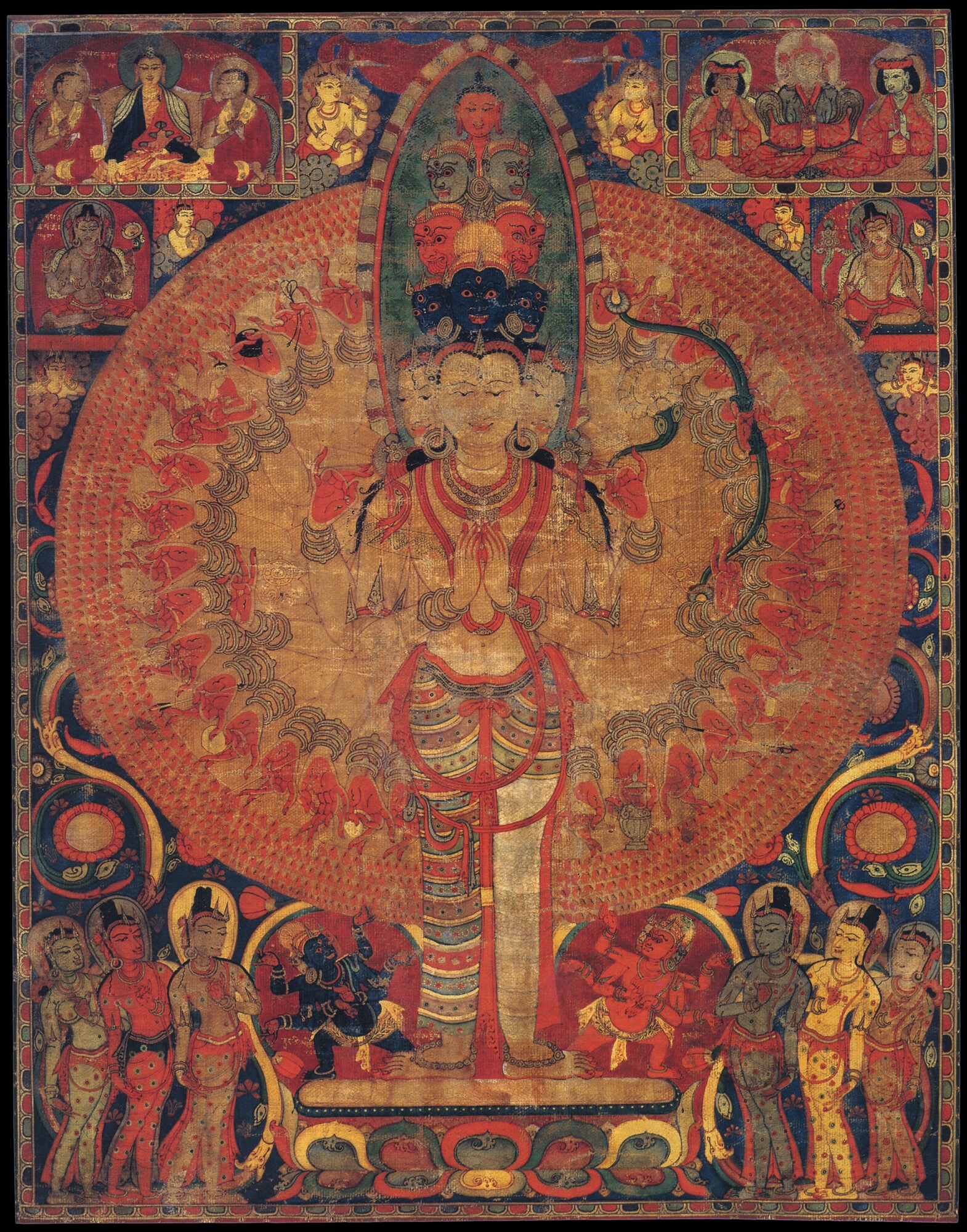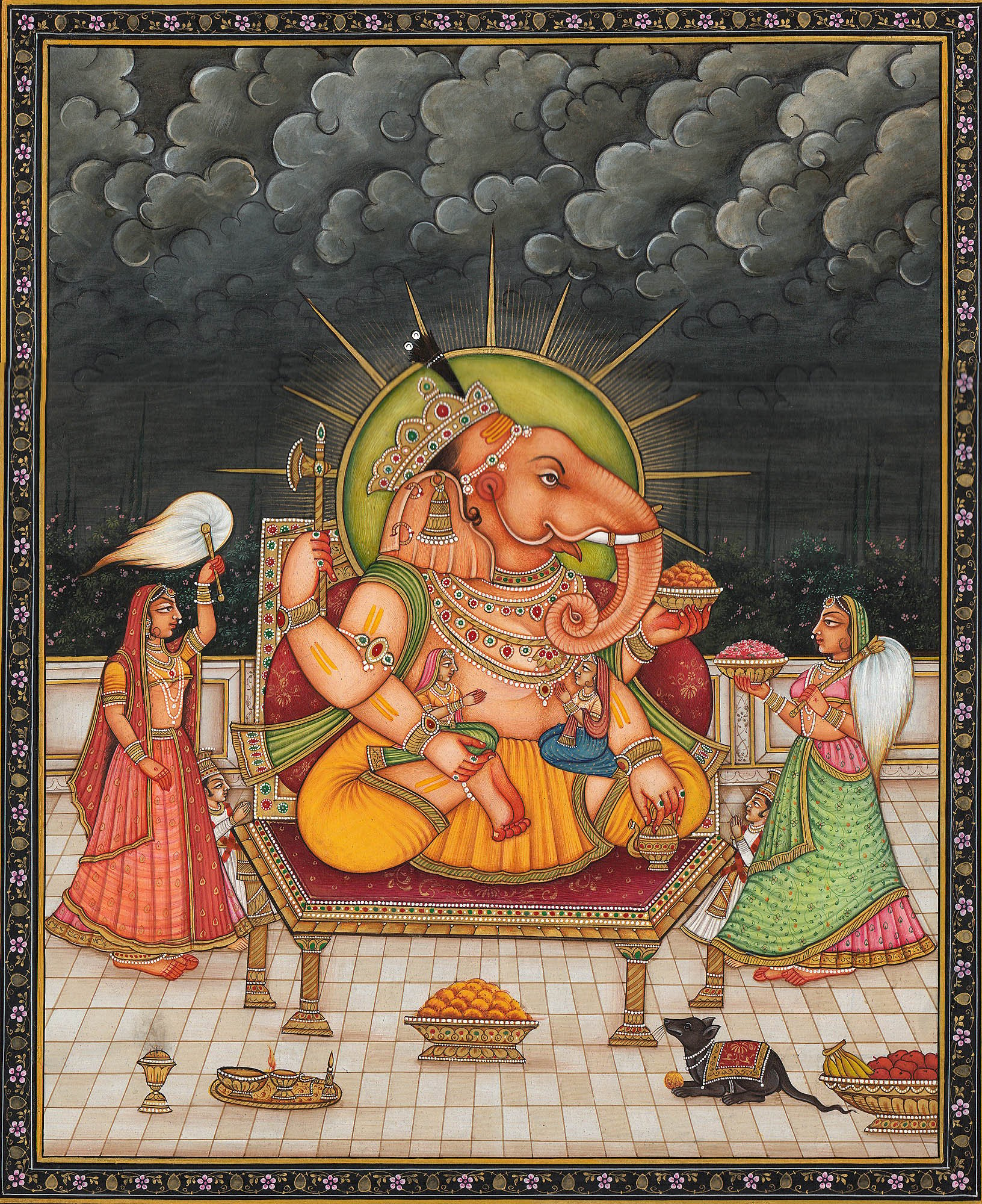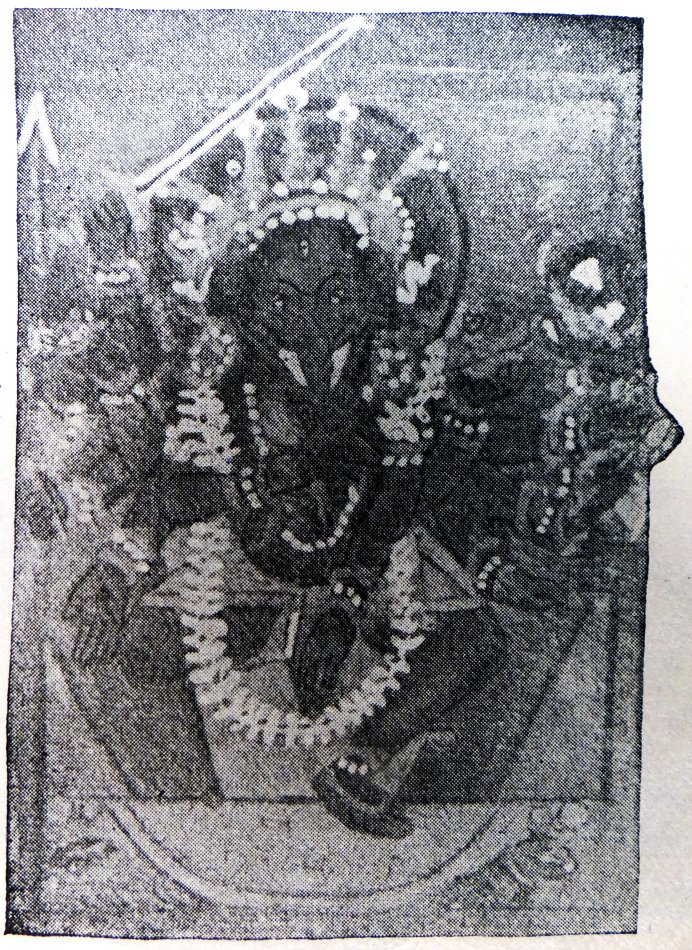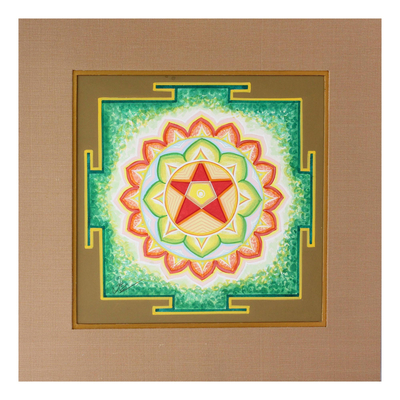I haven't reproduced anything, but I did tweak the same switch in my crown today, it was profoundly calming.That is how it works.
You tap the Dharma and a bit of Mirror Wisdom and it rushes forth deeper than you realize and the Bodhisattvas have already delivered a much vaster message than we can keep up with.
I get the feeling it also, along with Matangi used as an adjective, describes the women in the charnel grounds/jungle described in Kali's Odiyya, as well, they are "out caste" by choice and calling.Yes, the teaching is hidden in plain sight in the word "jungle" and, the whole timekeeping system. Candali is outright Untouchable, which is why this name is usually the leader of other low caste women.
So this might include the deep humming coming from the spine and the muladhara that resonates with so many things and in particular Om? It really does feel like it pervades everything, which is what they say about this syllable.According to the ancient writers on Phonetics, sound or word (वाक् (vāk)) which is constituted of air (वायु (vāyu)) originates at the Mulaadhaaracakra where it is called परा (parā). It then springs up and it is called पश्यन्ती (paśyantī) in the second stage. Thence it comes up and is called मध्यमा (madhyamā) in the third stage; rising up from the third stage when the air strikes against the vocal chords in the glottis and comes in contact with the different parts of the mouth, it becomes articulate and is heard in the form of different sounds. when it is called वैखरी (vaikharī);
According to Shivashakti:
Thanks to this resonance between Matangi and Ganesha, the Great Goddess is worshipped as the consort of Ganesha (at a certain level).
Generally speaking, the two consorts of Ganesha are Buddhi (the sparkling intelligence) and Siddhi (the success and effective fulfillment of wishes through paranormal powers).
Tara refers to the Superior Divine Logos (Pashyanti), that implicitly contains everything, Matangi represents the Inferior Divine Logos (Vaikhari), the so called “uttered word”.
So just the feet.By "Tara pose" I mean with one foot hanging off the seat, it is usually the other foot. Sometimes this is called Seated Ardhaparyanka.
So this plus the part before seems to make sense. Perhaps the liquid is from the nectar the split at the throat? I had it again last night even though I did not repeat the experience related to you before. I'm not understanding, and perhaps am not yet meant to, why it is so light and seems so lacking in viscosity compared to usual saliva.Considering that my experience was not based from these scriptures, I would still have to say that the signs of Crown Center stability, a thin silver Sushumna, and a Quiet Order are very close to the conditions of the Fourth Joy or Sahaja that will create the Mercury. And it will involve Citta Chakra or the Hum Ho of Vajra Rosary Tantra, which appears to be quite similar to Kurukulla's abilities. When the Nectar reaches here and it opens a bit, you raise the Downward Wind to intercept the liquid and pull it down into the Vessel. One might think, well, it's Yoga, you just meditate on the Heart. Sort of, but not like that. It has inner petals. And so the Suksma Yoga will have us establish the capillary column of Mercury raised beyond the Brahmarandra and it is only around that point that the Inner Chamber and Heart Bindu or Indestructible Drop becomes useful--which is the Square of Inverted Stupa. At that point you are really ready to touch the Heart of the Ista Devata.
Whoever it was seemed to experience it (however) and also seemed to have been waiting for it/meditating to achieve it. It was the first flitting that made me truly happy afterwards like I'd understood more of it than just a glint.At the time being, a conscious ability to broadcast formlessness is remarkable, even I would probably not be so loutish as to mistake it for a preta and try to harm it with salt or some spontaneous weapon out of my mind.
This again seems familiar.She can be drunk, and it may even be the Kadamba wine that Balarama likes.
Edited ---
I nearly forgot. Bhutadamara Vajrapani is standing on a white figure with four arms. I have never seen one of the figures they stand on have more arms before?
- Home
- Forum
- Chat
- Donate
- What's New?
-
Site Links

-
Avalon Library

-
External Sites

- Solari Report | Catherine Austin Fitts
- The Wall Will Fall | Vanessa Beeley
- Unsafe Space | Keri Smith
- Giza Death Star | Joseph P. Farrell
- The Last American Vagabond
- Caitlin Johnstone
- John Pilger
- Voltaire Network
- Suspicious Observers
- Peak Prosperity | Chris Martenson
- Dark Journalist
- The Black Vault
- Global Research | Michael Chossudovsky
- Corbett Report
- Infowars
- Natural News
- Ice Age Farmer
- Dr. Joseph Mercola
- Childrens Health Defense
- Geoengineering Watch | Dane Wigington
- Truthstream Media
- Unlimited Hangout | Whitney Webb
- Wikileaks index
- Vaccine Impact
- Eva Bartlett (In Gaza blog)
- Scott Ritter
- Redacted (Natalie & Clayton Morris)
- Judging Freedom (Andrew Napolitano)
- Alexander Mercouris
- The Duran
- Simplicius The Thinker





 Reply With Quote
Reply With Quote







 undarikam} {vibuddhapundarikaiaksah}. He is also described as one with a face (ananam > mukham) like a full-
undarikam} {vibuddhapundarikaiaksah}. He is also described as one with a face (ananam > mukham) like a full-

Bookmarks